How Seasonal Currents Affect Kayaking Safety
Seasonal water currents can drastically change kayaking conditions, turning a calm route into a challenge. Here's what you need to know:
- Spring: Snowmelt and rain create fast, cold currents. Dress for water temps, not air temps.
- Summer: Low water levels expose rocks and obstacles. Learn to read water patterns for safer navigation.
- Fall: Unpredictable flows and sudden changes demand extra vigilance and flexible plans.
- Winter: Ice and freezing currents make conditions dangerous. Stick close to shore and inspect gear for cold-weather durability.
Inflatable kayaks, like those from Elemental Sports, offer stability and safety across seasons but require regular checks for air pressure and wear. Always wear a life jacket, check water temps, and plan routes carefully. Kayaking is safer when you prepare for seasonal challenges.
The Basics of Kayaking in Current
Seasonal Current Patterns and Kayaking Risks
Each season brings its own set of water conditions, and understanding these patterns is crucial for safe kayaking. From fast spring currents to icy winter waters, being aware of the risks can help you prepare and avoid potentially dangerous situations.
Spring: Fast Currents and Cold Water
Spring is a tricky season for kayakers. While the air might feel warm, water temperatures often remain dangerously cold, creating a false sense of security. April, in particular, is the second-deadliest month for paddling accidents, with kayakers and canoeists involved in 20% of all recreational boating incidents in the U.S..
Spring’s snowmelt and heavy rains turn calm rivers into roaring torrents. These fast currents not only increase the risk of capsizing but also make self-rescue much harder. Even water as "warm" as 60°F can trigger cold water shock, causing involuntary gasps that heighten the risk of drowning.
"You need to assume you're going to end up in the water. You dress for water temperature, not air temperature." – Devin Winand, kayak instructor and guide
To stay safe, always check water temperatures before heading out and dress appropriately. A wetsuit or drysuit is essential, along with a properly fitted Personal Flotation Device (PFD). As Stacey Brown from the Virginia Department of Game and Inland Fisheries puts it:
"Wearing a life jacket is the best way to ensure your trip doesn't end in tragedy."
| Water Temperature | Hypothermia Risk | Recommended Clothing |
|---|---|---|
| 60°F and up | Low | Regular weather-appropriate clothing |
| 55–59°F | Moderate | Wetsuit or drysuit |
| 45–54°F | High | Drysuit recommended |
| Below 45°F | Extreme | Drysuit strongly recommended |
Summer: Low Water Levels and Obstructions
Summer brings its own challenges, especially with lower water levels. As water recedes, rocks, sandbars, and other hidden obstacles emerge, creating hazards that can damage your kayak or lead to injuries. Shallow areas also increase the risk of getting snagged on submerged objects, which can cause unexpected capsizing. Additionally, less water depth means less cushioning during a fall.
Reading the water becomes essential in summer. Deeper channels tend to look darker and smoother, while shallower areas appear lighter and more turbulent. Look for downstream V-shaped patterns, which usually indicate safer passage, and avoid upstream V-shapes, as they often signal hidden obstructions. When navigating obstacles, approach at an angle with firm, controlled strokes. If a collision seems unavoidable, lean into the obstacle to stabilize yourself and push off.
As summer fades into fall, these obstructions often give way to shifting currents.
Fall: Unpredictable Flows and Hidden Hazards
Fall weather brings unpredictable conditions. Rainfall can cause water levels and current speeds to change within hours. Combined with rapid temperature swings, this can lead to erratic water behavior that’s challenging to navigate.
Fluctuating water levels expose and conceal hazards inconsistently, making it harder to predict safe routes. A calm paddle can quickly turn into a demanding situation, so it’s essential to monitor weather forecasts, allow extra time for your trip, and have multiple exit strategies in place.
Winter: Ice Formation and Sudden Flow Changes
Winter kayaking demands extra caution and preparation. Ice formation poses significant risks, with chunks of ice and icebergs often hard to spot in low light. Moving water combined with shifting ice can create unpredictable and hazardous conditions.
Winter’s dense air amplifies wind effects, making waves form more easily and conditions deteriorate quickly. Equipment can also fail in freezing temperatures, as metal components like buckles and leashes may become brittle. Regular inspections of your gear are a must during this season.
To stay safe, stick closer to the shore to reduce the distance to safety if conditions change suddenly. Be aware that some familiar landing spots may be blocked by ice, so scout for alternative exits before launching. Adjust your route as needed and always keep a close eye on changing conditions.
How Seasonal Currents Impact Inflatable Kayak Performance
Inflatable kayaks shine when it comes to handling seasonal water changes, making them a solid choice for paddlers who want to enjoy the water year-round. Their design and portability provide solutions to the unique challenges each season brings. Let’s take a closer look at how these kayaks perform under changing conditions.
Benefits of Inflatable Kayaks in Changing Currents
Better Stability in Shifting Waters
One of the standout features of inflatable kayaks is their broad base, which offers enhanced stability and reduces the risk of capsizing. This is a game-changer during fall’s unpredictable flows or winter’s sudden currents. Their wider design helps paddlers maintain balance even when the water beneath them takes an unexpected turn.
Take, for example, the Sea Eagle FastTrack™ series from Elemental Sports. These models, like the Sea Eagle 385ft FastTrack™ ($999.00) and the larger 465ft FastTrack™ ($1,299.00), are built with PVC and drop-stitch technology. This construction not only adds durability but also helps them withstand impacts from ice and debris often found in seasonal waters.
Increased Buoyancy and Safety
Inflatable kayaks come with multiple air chambers, which not only improve buoyancy but also act as a safety net if one chamber gets punctured. This feature is especially useful in spring when debris-filled waters are common, or in winter when ice can pose a hazard. Even if one section sustains damage, the remaining chambers will keep you afloat.
Convenient Storage for Off-Seasons
When the paddling season winds down, inflatable kayaks are easy to pack away. Unlike bulky hardshell models, these kayaks can be deflated and stored in small spaces, making them ideal for winter storage. When conditions improve, they’re just as easy to set up and hit the water again.
Trade-offs to Keep in Mind
While inflatable kayaks excel in stability and safety, they don’t track as well as hardshell models and may feel slower in the water. They’re also more susceptible to wind and currents, which means you might need to put in extra effort to stay on course during fast spring flows. However, for recreational paddlers, the added stability often outweighs these drawbacks.
Gear Recommendations for Each Season
Your equipment choices can make a big difference when it comes to getting the most out of your inflatable kayak throughout the year.
Spring: Durability for Debris-Filled Waters
Spring waters are often filled with debris, so a kayak with drop-stitch construction is a smart choice. The Sea Eagle 380x Explorer ($999.00) is a great example of a durable inflatable kayak that can handle sharp rocks, rapids, and heavy use. Its design ensures you’re ready for the challenges that spring brings.
Summer: Lightweight for Low Waters
In summer, when water levels drop and obstacles become more exposed, portability is key. Inflatable kayaks like the Sea Eagle 330 Portable Kayak ($379.00) are lightweight and easy to carry, making them perfect for navigating shallow areas or portaging around obstacles.
Fall and Winter: Stability in Cold Conditions
As temperatures drop, cold weather can impact air pressure, so it’s important to check your kayak’s inflation levels more frequently. Inflatable kayaks excel in winter due to their stability, which is crucial when dealing with icy or unpredictable waters. For added safety, use a kayak leash to attach your kayak to your body. This prevents it from drifting away if you fall out, especially in strong currents or icy conditions.
| Season | Recommended Model | Key Features | Price |
|---|---|---|---|
| Spring | Sea Eagle 385ft FastTrack™ | Drop-stitch construction, debris resistance | $999.00 |
| Summer | Sea Eagle 330 Portable | Lightweight, easy to carry | $379.00 |
| Fall/Winter | Sea Eagle 465ft FastTrack™ | Enhanced stability, multiple air chambers | $1,299.00 |
Essential Safety Gear for All Seasons
No matter the season, safety should always come first. Check weather and water conditions before heading out, as winds, storms, and tides can change quickly. It’s also a good idea to paddle with a group or let someone know your plans, including your route and expected return time.
Always carry a repair kit designed for inflatable kayaks. While high-quality models are made with puncture-resistant materials, there’s still a chance of minor leaks or valve issues. Elemental Sports includes repair kits with their kayaks, but for longer trips or extreme conditions, consider upgrading to a more comprehensive kit.
sbb-itb-2bb67b7
Safety Strategies for Navigating Seasonal Water Currents
Being well-prepared and using the right techniques can mean the difference between an enjoyable day on the water and a potentially dangerous situation. Each season brings its own set of challenges, so adapting your approach is key to staying safe while kayaking.
Pre-Trip Preparation: Research and Planning
Safe kayaking starts long before you hit the water. Seasonal changes can make conditions unpredictable, so careful planning is essential.
Check Real-Time Water Data
Water levels can change quickly due to rainfall, snowmelt, or dam releases. Tools like the USGS Water Resources website provide real-time flow data for rivers. By comparing current flow rates with historical averages, you can spot when a calm river might have turned into a fast-moving hazard.
Monitor Weather Forecasts and Advisories
Weather plays a huge role in water safety. Look to the National Weather Service for river forecasts, flood warnings, and severe weather alerts. Keep an eye on upstream rainfall, as it can lead to rapid changes in flow. In spring, prepare for fluctuating water levels, unpredictable temperatures, and debris. Always dress for the water temperature, not just the air.
Scout Your Route and Access Points
Know your planned route inside and out. Identify hazards like low-head dams or downed trees, and pinpoint alternative exit spots. In winter, double-check entry and exit points since ice can form overnight, blocking previously clear routes.
These steps set the stage for safe navigation once you're on the water.
On-Water Techniques for Seasonal Hazards
Once your planning is complete, use these strategies to handle seasonal challenges effectively.
Using Currents to Your Advantage
Whenever possible, paddle with the current. If you're paddling against strong currents, stick close to the shore and use natural eddies to conserve energy.
Mastering Eddy Techniques
Eddies - calm areas of water behind obstacles like rocks or bridge piers - are your best friend in moving water. To enter an eddy, angle your paddle at 45–60° and lean your kayak into the turn. Exiting involves reversing the process, tilting your boat downstream. These spots are great for resting, adjusting your route, or escaping strong currents.
Navigating Rapids and Fast Water
When tackling rapids, lean slightly toward the upstream side of your kayak to stay stable. Keep your body low and centered to reduce the risk of tipping. Relax and let your kayak move with the turbulence - this applies even to stable inflatable kayaks. Good technique makes all the difference.
"Just because it wasn't there yesterday, doesn't mean it won't be there today." - Ken Whiting, Aqua Bound ProStaffer
Recognizing Changing Conditions
Water conditions can shift in an instant, especially after heavy rain or during snowmelt. Watch for signs like rising water levels, muddier water, or increased debris. If things start to exceed your skill level, don't hesitate - head to shore immediately.
Required Safety Gear and Practices
The right gear can save your life. Always wear a properly fitted, USCG-approved life jacket. Dress for immersion with a wetsuit or drysuit, and carry essentials like a whistle, throw rope, bilge pump, first aid kit, and spare clothes in waterproof bags. Knowing how to use this gear is just as important as having it.
Paddling with a buddy or joining group outings is a smart way to build confidence. Share your route details with someone you trust, and regularly practice self-rescue techniques so you're prepared for a capsize. A kayaking course can also help sharpen your skills and teach you rescue procedures.
Know your limits. Even familiar waters can become unpredictable with seasonal changes. Avoid rapids or strong currents that exceed your ability, especially when water temperatures are low or debris is present. There’s no shame in turning back or choosing a safer route - it’s always better to prioritize safety.
Before each trip, inspect your kayak and gear for any needed repairs. Cold weather can affect the air pressure in inflatable kayaks, while long exposure to sunlight or extreme temperatures can weaken materials.
Investing in reliable equipment - like those from Elemental Sports - rounds out your preparation for safe, season-ready kayaking.
Conclusion: Adjusting for Year-Round Kayaking Safety
Understanding how seasonal currents affect waterways is key to staying safe while kayaking all year. The line between an unforgettable adventure and a risky situation often depends on preparation and respecting the ever-changing conditions.
Essentials for Safe Kayaking
Effective trip planning and smart on-water practices can make all the difference. Always check water levels before heading out - rivers can turn into raging torrents after storms. Know your limits and avoid tackling rapids or flows that push beyond your skill level, especially when seasonal shifts add unpredictability to familiar waters.
Dress appropriately for the water, not just the weather. Water temperatures, especially during spring and fall, often lag behind the air temperature. Even water as warm as 60°F can trigger cold water shock, so wearing proper thermal protection is critical.
Stay informed about current conditions. Keep an eye on weather forecasts, river advisories, and upstream rainfall that might impact your route. Share your plans with someone trustworthy and, whenever possible, paddle with a buddy. This is particularly crucial given that 84% of people who drowned in boating accidents weren’t wearing life jackets.
The statistics speak for themselves: in 2018, kayaks and canoes accounted for 20% of all recreational boating accidents in the U.S., with April ranking as the second-deadliest month for paddling accidents.
To round out your safety plan, ensure you have gear suited for all conditions.
Choosing Gear That Stands Up to Every Season
Having dependable equipment is a cornerstone of kayaking safety. Opt for gear that can handle the challenges posed by different seasons. Inflatable kayaks, for example, are lightweight, durable, and stable in unpredictable waters. However, seasonal changes can affect your gear - cold weather impacts air pressure in inflatables, while extreme heat and UV exposure can weaken materials. Inspect your equipment regularly to ensure it’s in top condition.
Models like the Sea Eagle FastTrack™ series and Explorer kayaks from Elemental Sports are specifically designed to handle these seasonal demands. Their sturdy construction and stability make them solid options for navigating fast spring currents, shallow summer waters, or the variable conditions of fall.
Regardless of the season, certain safety gear is non-negotiable. Always have a properly fitted USCG-approved life jacket, a whistle, a throw rope, a bilge pump, and a first aid kit. Adjust your clothing and thermal layers to match the water temperature to stay protected.
As Heroes on the Water wisely puts it:
"Prioritize safety - the water will always be there another day." - Heroes on the Water
Seasonal currents may bring challenges, but with thoughtful preparation, dependable gear, and an awareness of changing conditions, you can enjoy kayaking safely year-round. The water doesn’t have to be perfect - what matters is being ready for whatever comes your way.
FAQs
How can I stay safe while kayaking during spring currents?
Spring kayaking comes with its own set of challenges, especially when it comes to dealing with strong currents. Being well-prepared can make all the difference in ensuring your safety. Start by always wearing a U.S. Coast Guard-approved life jacket - this is non-negotiable. Cold water shock can happen even in temperatures between 70–77°F, which can quickly lead to hypothermia. To protect yourself, consider wearing a wetsuit or dry suit.
It's also smart to paddle with a buddy and let someone you trust know your plans by leaving a float plan. Bring along essential safety gear, like a whistle, to signal for help if needed. Stick to calmer waters by staying near the riverbanks and using eddies to take breaks. If you're not experienced, steer clear of fast-moving currents - they’re best left to seasoned paddlers who feel confident in their skills.
With proper preparation and a good sense of awareness, you can enjoy a safe and rewarding spring kayaking trip.
What safety gear should I use for kayaking in cold weather?
When kayaking in cold weather, staying warm and dry isn't just about comfort - it's about safety. Hypothermia is a real risk, so proper gear is essential. Start with a dry suit or wetsuit to keep your body insulated and shielded from cold water. Underneath, layer up with thermal clothing, but steer clear of cotton. Cotton holds onto moisture and loses its ability to keep you warm when wet, which is the last thing you want out on the water.
To keep your hands functional and your grip secure, opt for neoprene gloves or pogies. For your head, a neoprene hat is an excellent choice to minimize heat loss - your head can lose a surprising amount of heat if left unprotected. Finally, double-check that all your gear is waterproof and specifically designed for cold conditions. This way, you can focus on the adventure while staying safe and comfortable.
How do inflatable kayaks handle different seasonal water conditions?
Inflatable kayaks are crafted to handle a range of water conditions while offering impressive stability and strength. They're particularly well-suited for calm waters, making them ideal for leisurely paddling or fishing trips. Plus, their lightweight, portable design means you can easily transport and store them without much hassle.
That said, when it comes to more demanding conditions - like strong currents or choppy waters - traditional rigid kayaks often excel with better speed and maneuverability, which can be crucial for tackling fast-moving or unpredictable environments. Still, many inflatable kayaks are made from durable materials such as PVC or Hypalon. These materials are resistant to punctures, abrasions, and UV exposure, ensuring they can endure seasonal challenges when properly maintained.
If you're planning to explore seasonal waters, investing in a high-quality inflatable kayak - such as those from Elemental Sports - can give you a reliable mix of performance, convenience, and durability.




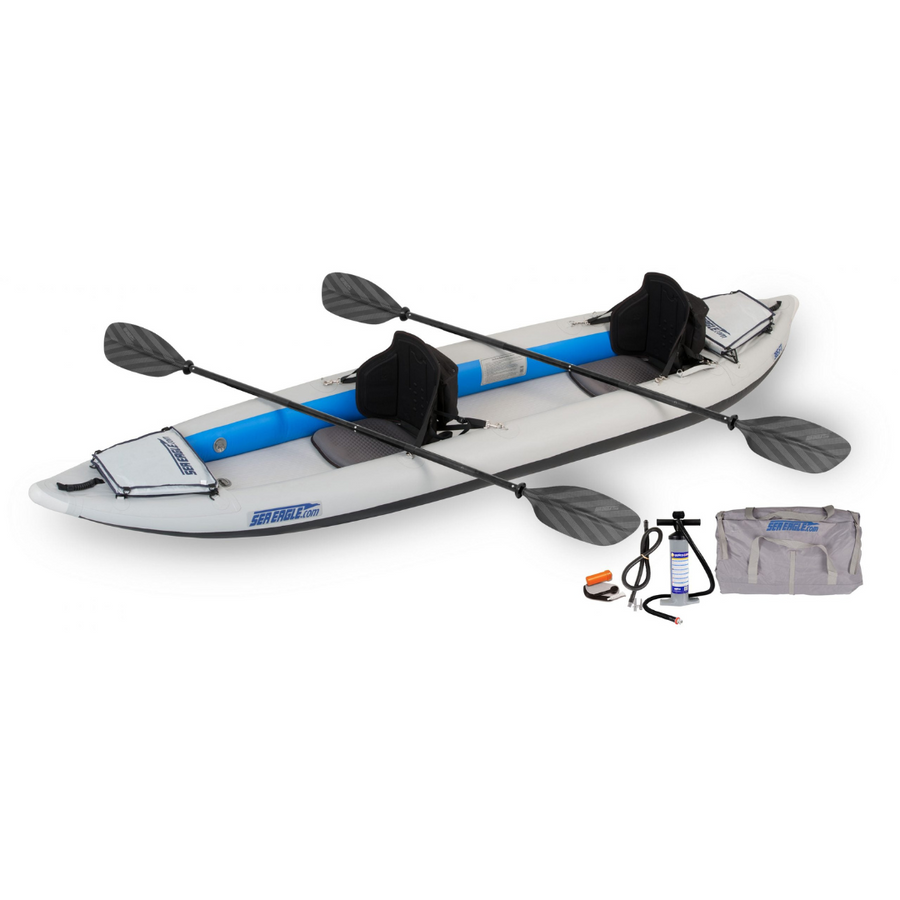
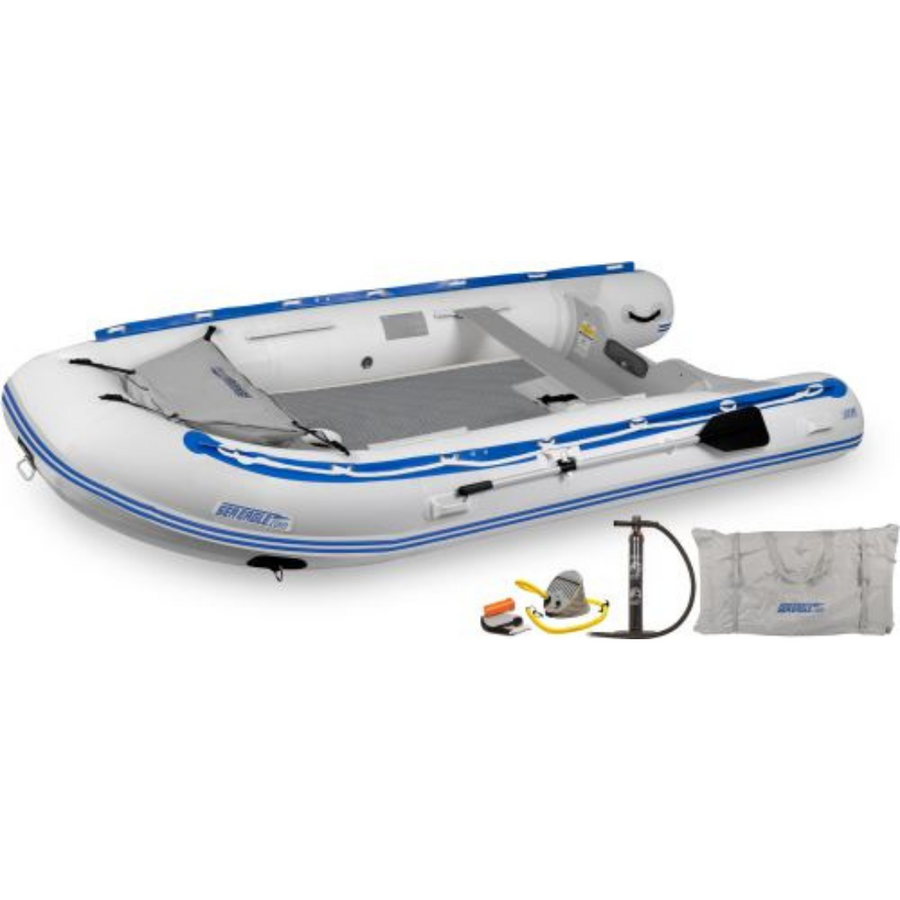
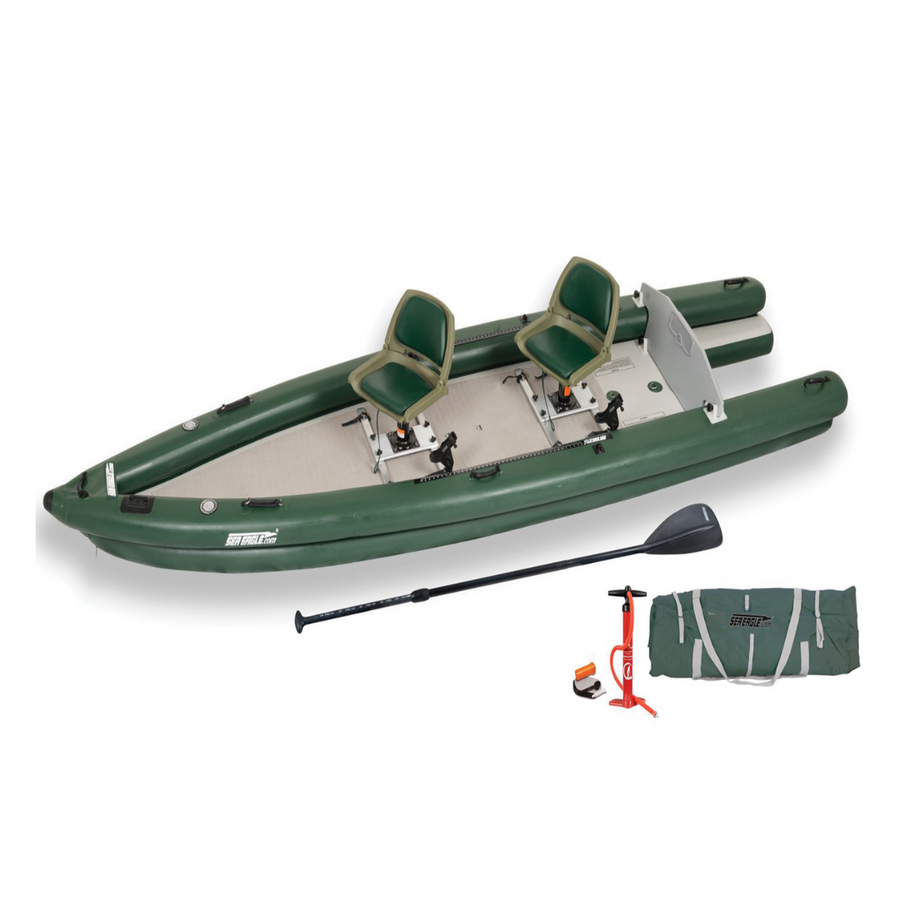
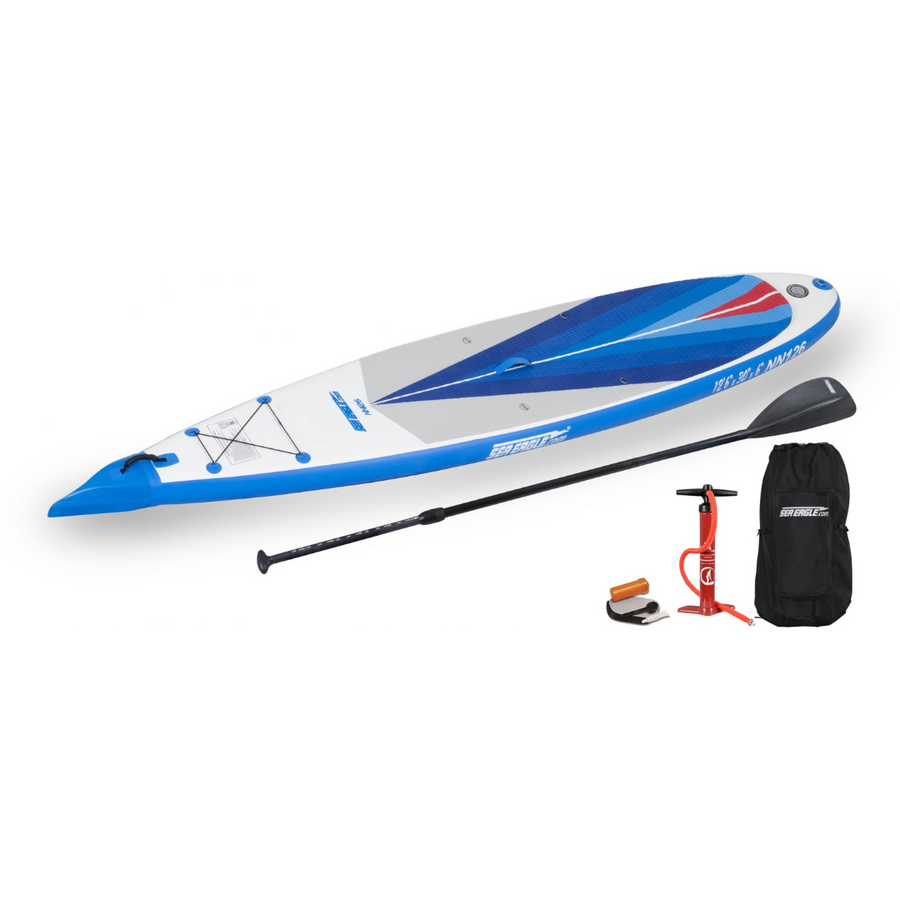
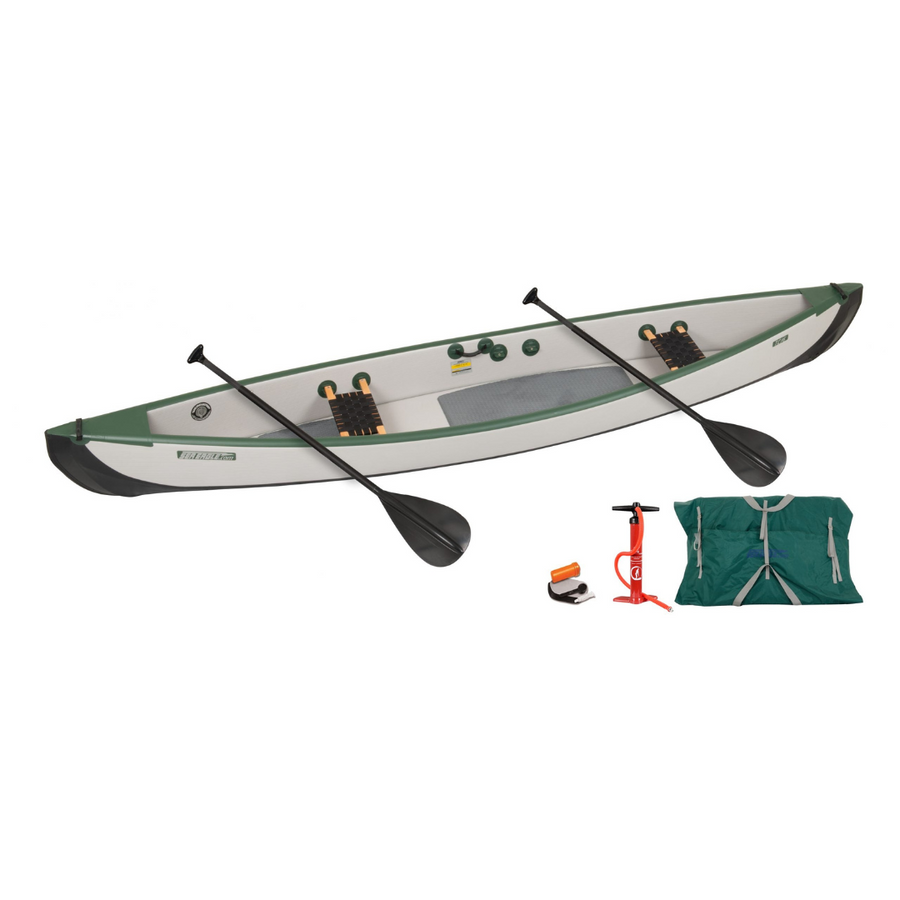
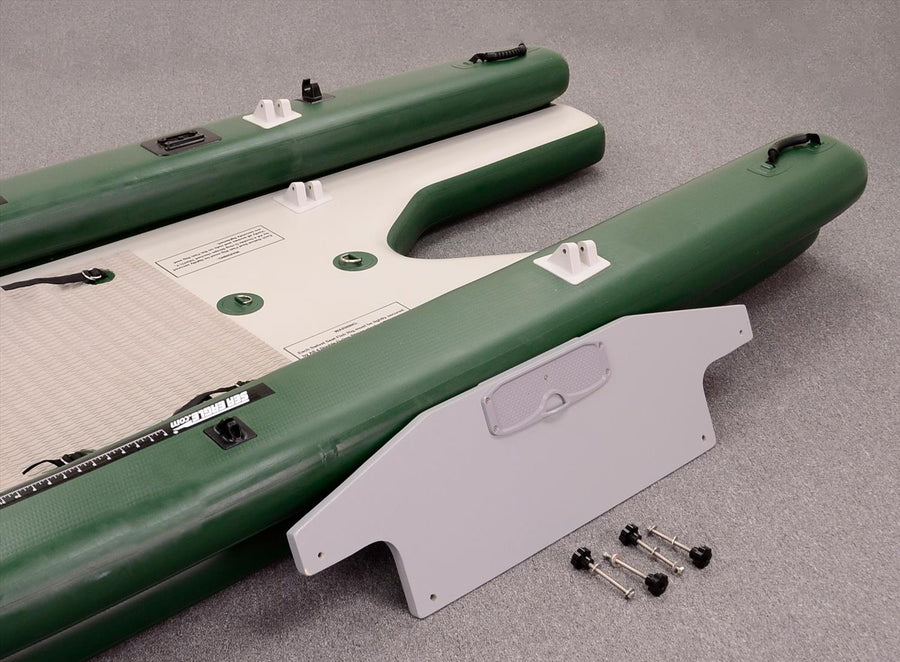


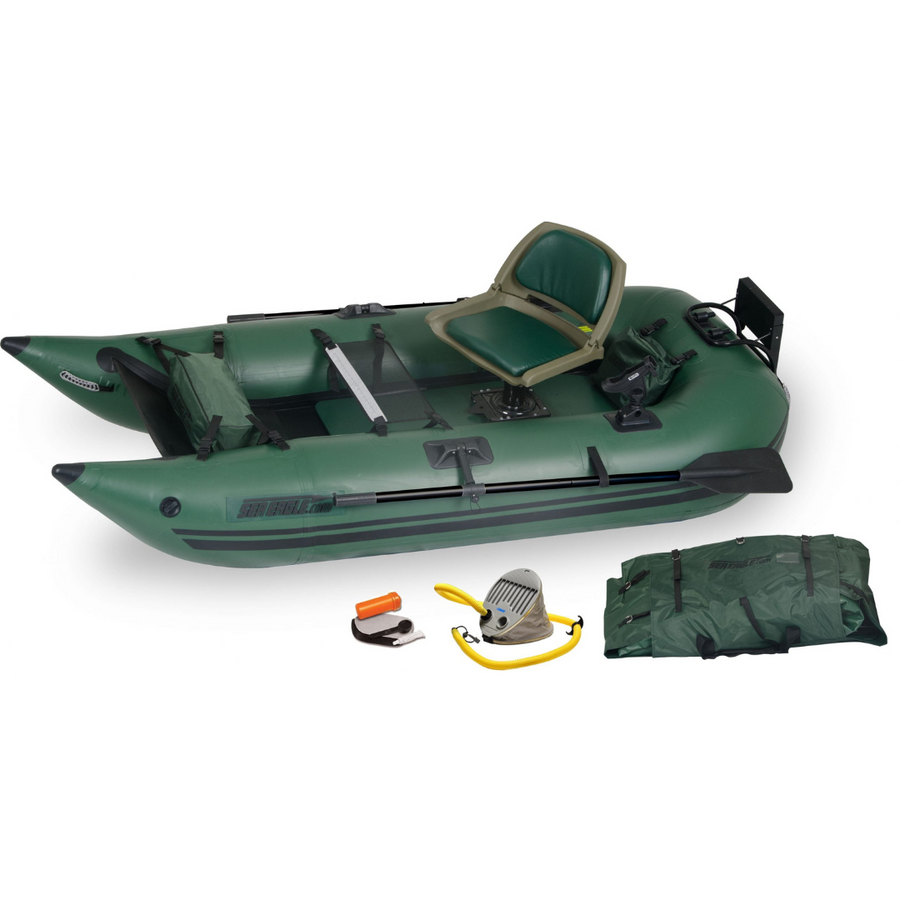
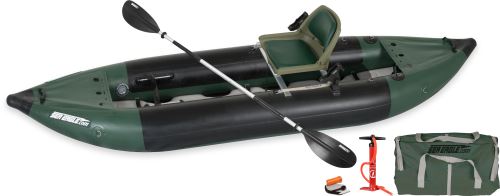
Leave a comment